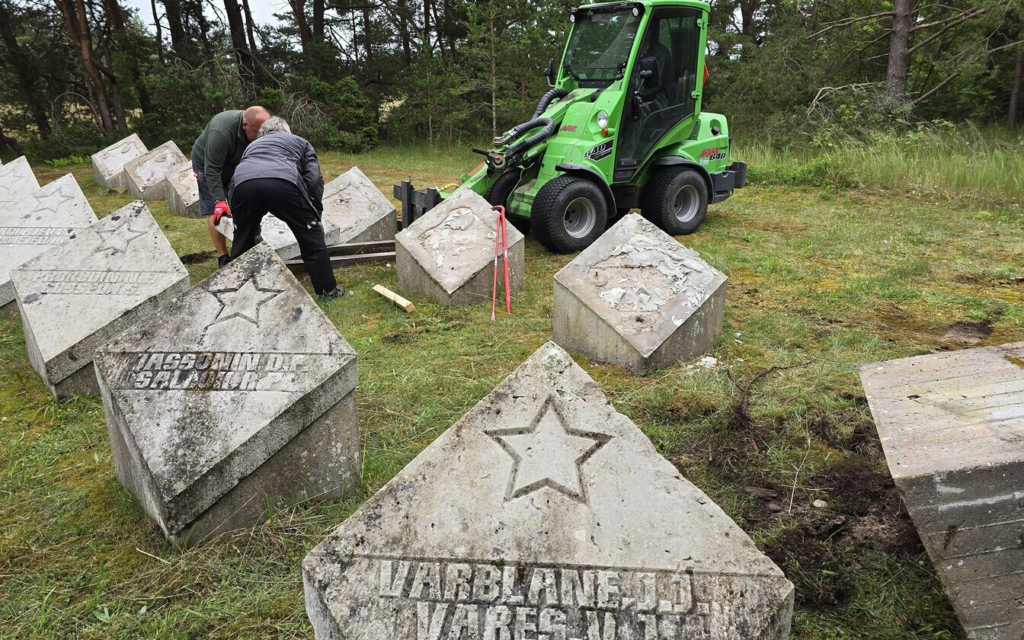At the end of June, the removal of the grave markers of the Red Army soldiers buried in Tehumardi in Saaremaa began. A sword-shaped obelisk remains, but some of the text on it will be covered up.
Broadcast on ERR: https://www.err.ee/1609385786/galerii-tehumardil-algas-punaarmee-sodurite-hauatahiste-eemaldamine

On Monday, the removal of the grave markers of the Red Army soldiers buried in Tehumardi in Saaremaa began. A sword-shaped obelisk remains, but some of the text on it will be covered up.
In the past year and a half, the Estonian War Museum has organised a total of around 2,500 burials of former Red Army soldiers in common graves outside the cemetery. In Saaremaa, the remains of nearly 300 Red Army soldiers who died in the Second World War have been reburied in cemeteries.
On Monday morning, excavations began in Tehumardi, where up to a few hundred Red Army soldiers may be buried. The existing dolomite grave markers with names will not be put back in place, but a sword-shaped obelisk will remain in Tehumardi, but with some of the text covered up.
The request for the reburial at Tehumardi was made by Saaremaa municipality, Liis Lepik, deputy mayor of Saaremaa municipality, told ERR, adding that the possible remains would be reburied at Vananõmme cemetery.
“This place here will be cleaned up later and what else it might become in the future, we don’t know. If the remains are identified here and reburied, after that we will not have to mark any grave here,” Lepik said.
So far, the remains of 294 people have been reburied in Saaremaa.
According to the names, a few hundred people may have been buried at Tehumardi, but there is no precise prior knowledge of the exact number of those buried, said Arnold Unt, an archaeologist at the Estonian War Museum.
“There is a diagram that has survived of the site, which is the layout of graves drawn by one of the sanitary battalions. How much has or has not been added since then, only the excavation will tell,” Unt said.
The excavated remains will not be examined by DNA analysis, but will simply be reburied in the cemetery, he added.
